A whole house water filter is usually black because of mold. Black sediment, algae, mineral deposits or even the activated carbon in your filter can also turn the filter black. A whole house water filter turning black is a common problem, but can be easily be fixed by cleaning or replacing the filter depending on the root cause of the problem.
Whole house water filtration systems treat water right at the point where it enters your home, removing contaminants including minerals and sediments. This ensures that the water coming from every faucet in your home is clean and free of pollutants.
It can be frustrating to see your whole-house water filter has turned black when it’s supposed to be cleaning your water. Here are the common causes of a black whole house water filter so that you can determine your specific problem. Keep reading for a step-by-step guide on how to fix the problem too.
Causes of black whole house water filters
Here are the contaminants that can turn your water filter black:
1. Iron Deposits

Heavy amounts of iron in water can result in rust from oxidation.
If your filter is trapping or removing iron from your water this will give a brown or blackish discoloration to the filter. The color will often be more brown than black, but other contaminants in the water like organic matter, can make it appear darker
Iron is a very common mineral found in home water supplies, especially if you are using ground water. Iron can also have entered your water supply from rust gathering in your pipelines, especially if the pipeline is old.
The only way to confirm if this is the cause is to run a chemical test on your incoming water.
Water Purification Guide has more detailed information on iron in water available here.
2. Manganese Deposits
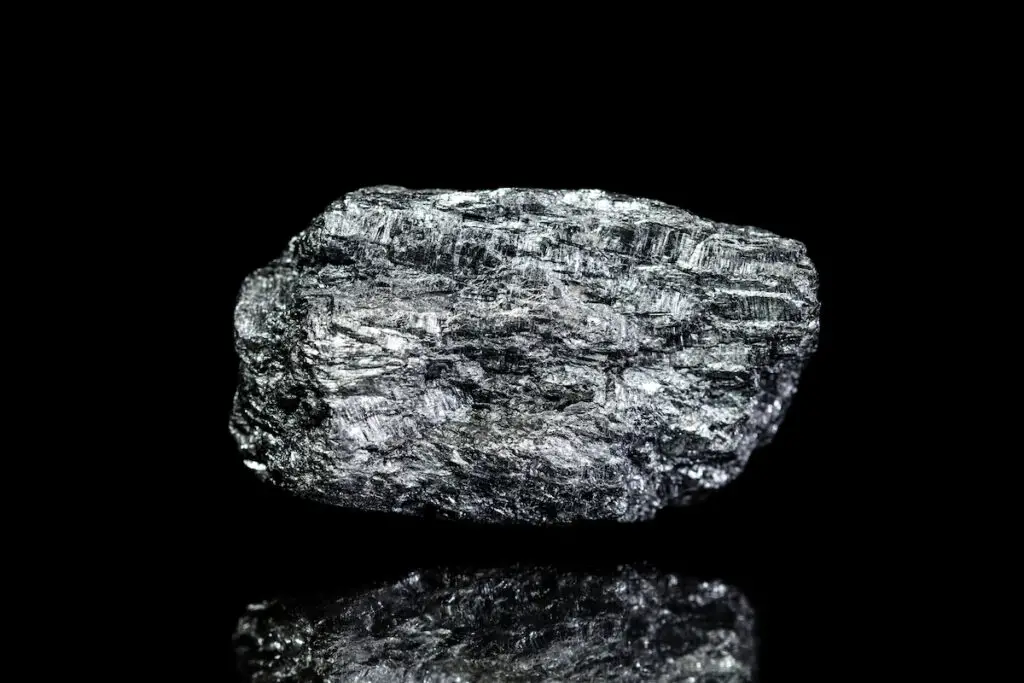
Like iron, Manganese is an element commonly found in our water supplies. Even more so if it comes from a well or other groundwater sources.
Manganese compounds tend to be black or dark blue in color, and if your filter is doing a good job trapping these, then it might turn black. Manganese deposits on a filter will usually look darker than iron ones.
High amounts of manganese in your blood can be harmful for you, leading to several neurological and other organ complications, and should be avoided.
Like with iron, the only way to confirm if your water has manganese is via a chemical test.
3. Black Sediments
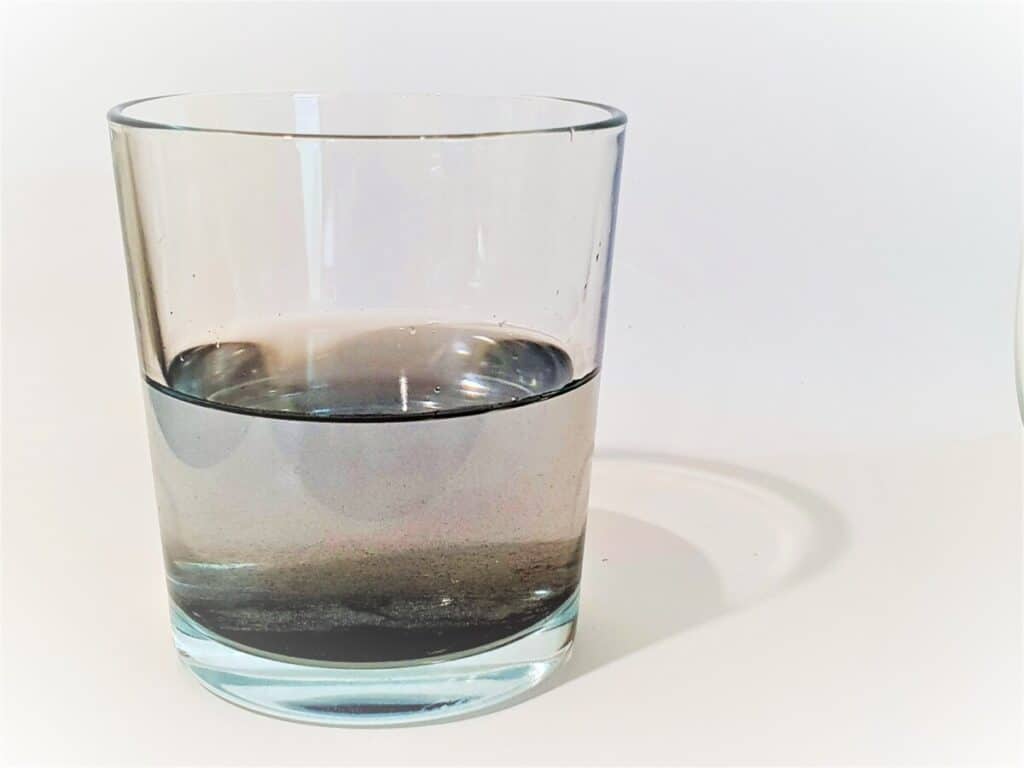
Depending on the quality and composition of the soil in your area, it isn’t uncommon for the water coming in to your home to have black sediment.
This is especially possible if you live in an area with volcanic soil which often has a much higher amount of black sediments and minerals.
This usually enters your water supply in the form of black sand or fine black silt. When your sediment filter traps it, the sediment tend to accumulate and give your filter a black color over time.
Sometimes, however, you may notice that your filter has turned black suddenly. If this is the case, then it is likely that your water source was recently contaminated with external sources of water, like from heavy rain or floods.
4. Algae and Bacteria
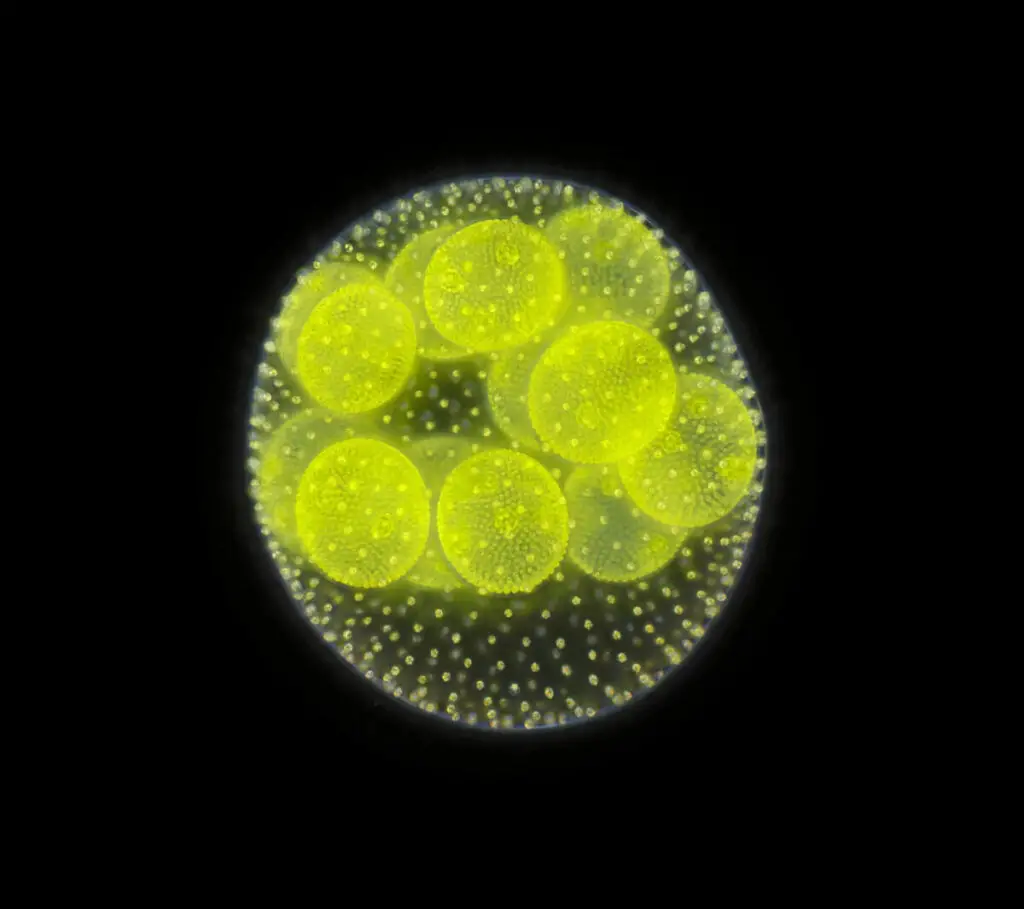
Whenever there is natural water, you can expect at least some amount of microbiota in it. This is usually in the form of algae or bacteria.
Many algae and bacteria are harmless, but when they accumulate over time, they can cause your filter to clog up. They can also harbor other harmful parasites, or release black minerals into your filter.
Note: If the bacteria are coming from a leaked septic system, however, they might be E. coli or other harmful pathogens.
You will need laboratory experts to confirm this if that is the case, though a good plumber might also be able to detect if there is a leak.
If you use a well and suspect algae is turning your filter black, there is a step-by-step process to quickly remove the algae from your well available here.
5. Mold (Mildew)

Your water filter is surrounded in a constant moist environment. If the temperature is favorable, then it is very possible that there is a mold growth in your filter system.
You can usually recognise this by the typical musty smell of mold in your filter.
Mold is a type of fungi that is everywhere. They are the most common cause of black water filters.
Often once mold is established, the filter component must be discarded and cannot be cleaned and reused as the spores are difficult to remove and tend to re-establish over and over again.
If it is ‘black mold’ it may be one of several mold species having a blackish appearance. The black mold can be invisible initially, but you will notice a musty odor over time.
Black mold spores are transmitted in the air, allowing this fungus to spread throughout your home. Mold should be quickly removed to prevent its spread.
6. Activated Carbon
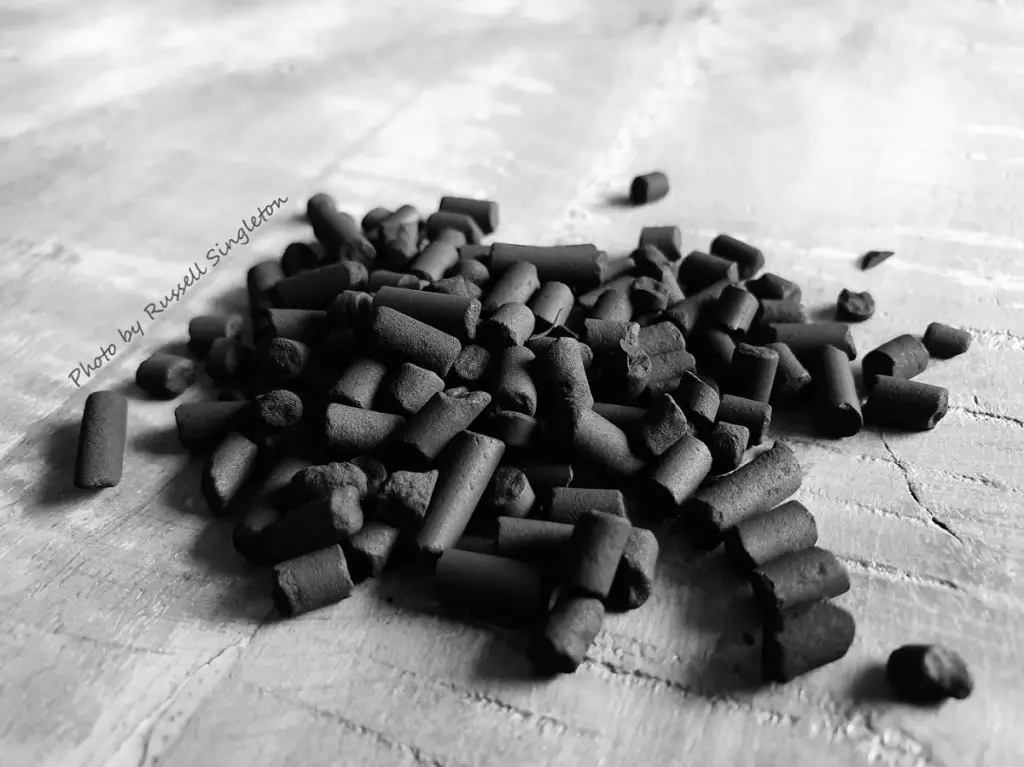
Many filter systems these days use activated carbon to adsorb contaminants.
If there is a damage or leak in your carbon cartridge, even a small amount of carbon coming out of its proper place can make the whole filter black.
This is usually not a cause for concern, though you might want to replace the carbon cartridge to ensure the filter can keep doing its job effectively.
However, carbon is usually more likely to make your water black than the water filter. So carefully go through our steps below when figuring out which problem you have.
7. New Well and/or Failing Septic System
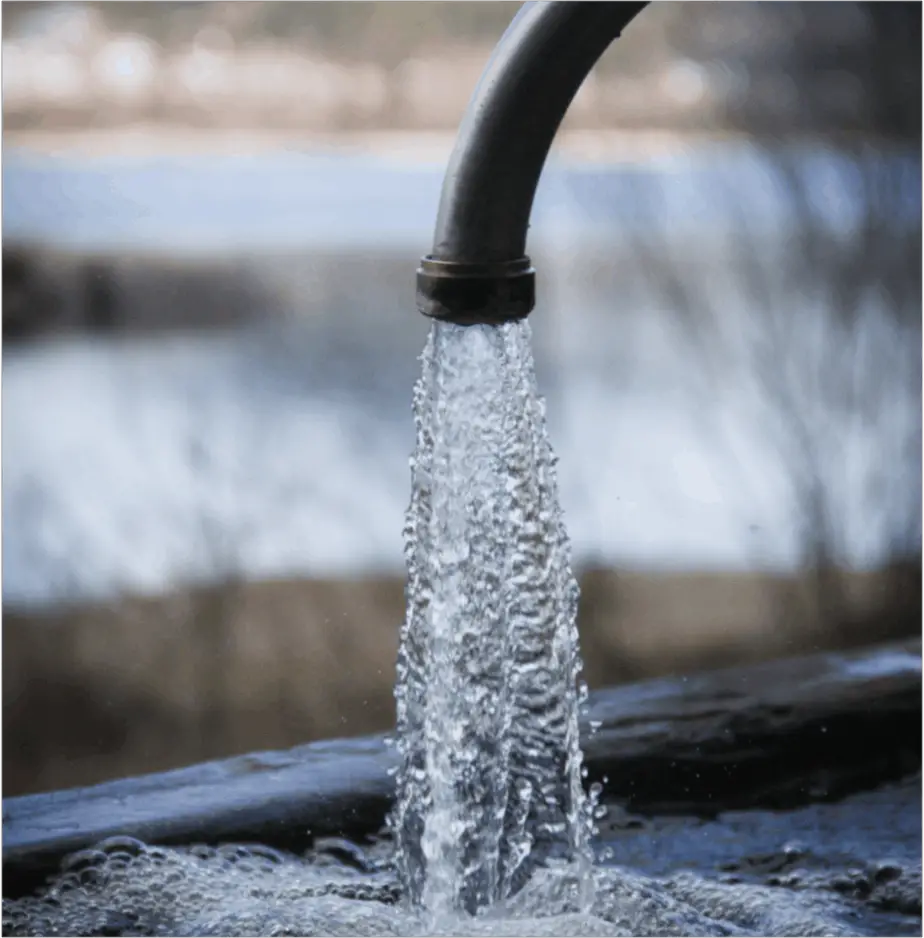
If you use a well and it is new, then it is going to let out a lot of sediments for some time until it gets to settle.
If your sediment filter is good, then this should not be a reason for concern as the problem will solve itself with time.
Sometimes, however, the issue is a faulty septic system that is allowing the sewage to leak through. This is a potential health hazard, and will require expert consultation to diagnose and solve.
If your whole house water filter is leaking, Water Purification Guide has a troubleshooting guide to help you fix it available here.
[Step-by-step Guide] Which Contaminant Made Your Whole House Water Filter Black?
Now that we have discussed the potential causes of why your whole house water filter has have turned black, let’s look at which one is causing the issue in your particular case.
1. Check Your Filters
You should start with a thorough assessment of your filter system.
First, take a look at the carbon cartridge (if you have one). Are there black particles leaking out anywhere around or below it? If so, the black particles you see are likely activated carbon components.
The reason for the leak could be a faulty O-ring/washer, which is easy to replace.
Otherwise, there could be some crack/damage in the cartridge itself. To see if this is the issue, try running the water through the system at full pressure, which may reveal exactly where the leak is.
If you do see a leak, your cartridge will need replacement.
2. Get the Water Tested
As we discussed earlier, the incoming water could be polluted with mineral deposits.
Although there are many types of tests available, we recommend getting yourself test kits for iron and manganese, which are the most common culprits.
You can even have a professional come and test your water, although DIY kits or lab test kits are easier and still reliable.
In addition to chemicals, you may also want to check for E. coli. Most commercially available test kits do the job just fine.
If the kits do show E. coli contamination, however, there are no DIY solutions here. We recommend consulting your water authorities or your plumber to deal with the issue.
3. Check Your Pipelines
Rusty or old pipelines could be leaching minerals like iron towards your filter. Thankfully, a simple visual inspection is often enough to identify this issue.
4. Check your septic tank/system
A leaking septic tank is, by far, the most serious cause of black water in your home, next to heavy manganese contamination.
A leaky septic tank usually shows a lot of grass growing around it (since septic content is a good fertilizer for soil).
There could also be a lot of smell of human waste around the tank, or in your water.
Contact your plumber immediately if you think there is something wrong with your septic system, as it is a potential health hazard for your family.
5. Get your well inspected
Different states have different regulations here, but it is always a good idea to have your well water tested for organic and inorganic contaminants at least once a year.
This could help you decide if the cause for your black filter is black sediments and silt, algae, a septic leak, or mineral buildup.
Solution: How to Clean a Whole House Water Filter
No matter what the cause of your black water filter, the most important thing is to clean it and remove the black residue.
There are different whole house filter systems, which have different individual elements, so there is no one common solution. However, these steps should give you a general idea on how you can clean your whole house water filter:
- Shut off all incoming water so you have a dry, safe working space.
- Next, you need to relieve the pressure from your water system. For this, you can either open the faucets in your home and let the water come out, or you can press a button usually located in your filter system for pressure relief.
- Remove the filter housings and casings. For this, you will need a wrench, a screwdriver and a bucket to hold any leaking water.
- The next step is to actually clean the filter elements. Use a brush and warm, soapy water to clean individual filter components, including O-rings.
- If any of the filter elements have turned fully black or won’t lose the black pigmentation even on washing, it is a good idea to replace that element completely.
- Reassemble the filter elements and put all the screws back in place.
- Run fresh water through the system, and you are good to go.
How to prevent your whole-house water filter from going black
Now that you have identified why your filter is black and addressed the issue, it is important for you to learn about certain steps you can take to ensure the situation won’t repeat again.
- Be regular with your maintenance. Change the filter cartridges as per the manufacturer’s instructions, and also depending on the water use. Also remember to flush your filtration system regularly to reduce mold growth.
- Test your well water regularly if it is the source of water in your home.
- To prevent mold growth, consider installing a dehumidifier, or a hygrometer to check on humidity levels frequently.
- Regularly have your pipes and plumbing inspected for any potential damage.
- Consider adding KFD (Kinetic Fluxion Degradation) to your system, which will help deal with heavy metals in your water.
Take-Home Messages
- Your whole-house water filter may turn black when it is doing its job well and filtering out contaminants like iron, manganese, or black sediments. Usually, this is not a cause for concern, though you might want to have the filter cleaned/replaced.
- Sometimes, the cause for your filter turning black may be more hazardous, like a septic tank leak, or mold growth.
- A good way to ensure your filter stays healthy and does not turn black is to keep up with maintenance frequently and to have your water tested at regular intervals.
